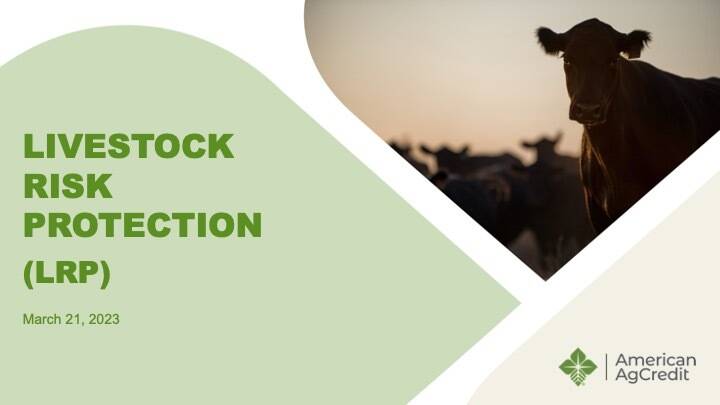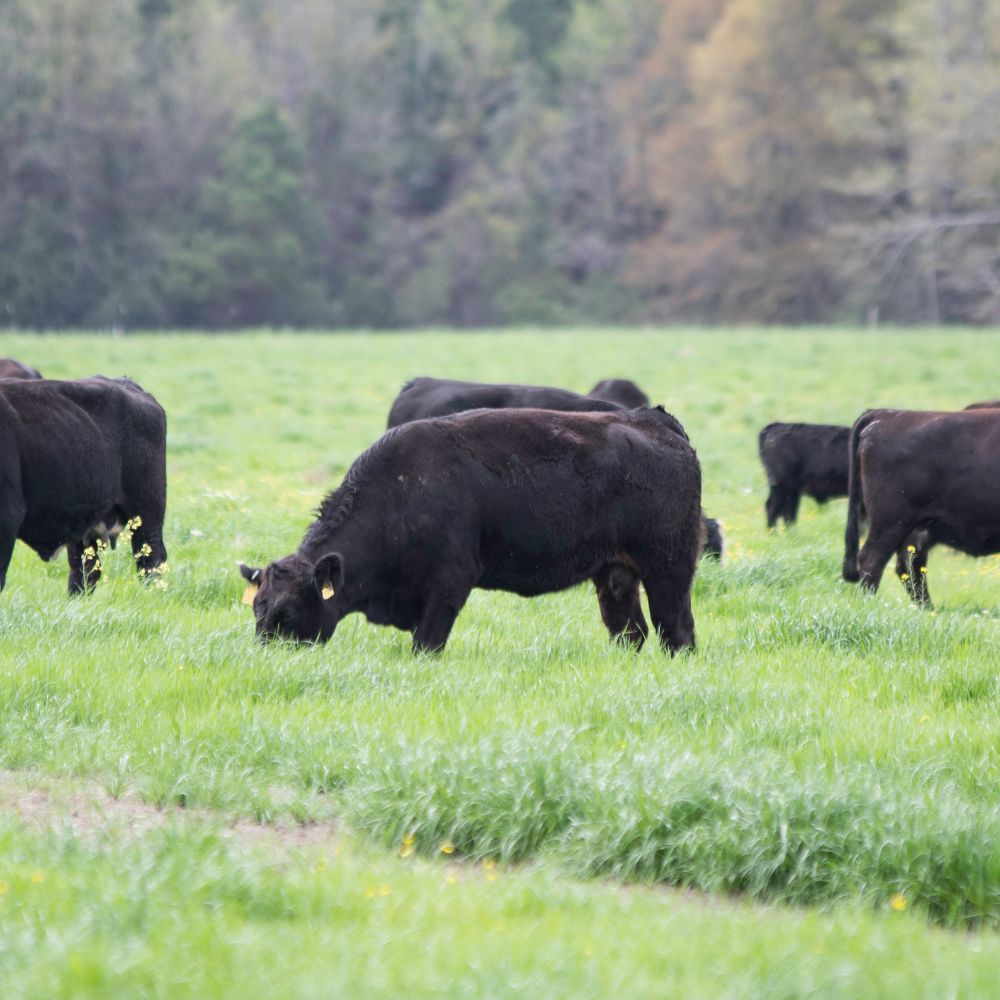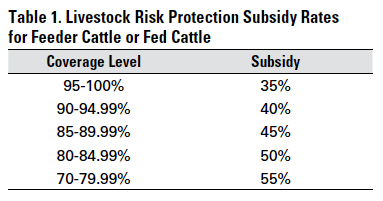Specialist Assistance: Bagley Risk Management Strategies
Specialist Assistance: Bagley Risk Management Strategies
Blog Article
Recognizing Animals Threat Defense (LRP) Insurance: A Comprehensive Guide
Navigating the realm of animals threat security (LRP) insurance coverage can be an intricate endeavor for several in the agricultural field. From exactly how LRP insurance functions to the various protection alternatives offered, there is much to uncover in this detailed guide that could possibly shape the way livestock producers approach threat management in their businesses.

Just How LRP Insurance Works
Sometimes, comprehending the auto mechanics of Livestock Risk Defense (LRP) insurance can be intricate, however breaking down exactly how it works can provide clarity for herdsmans and farmers. LRP insurance policy is a risk monitoring device created to secure livestock producers versus unexpected price decreases. It's crucial to note that LRP insurance coverage is not a revenue guarantee; instead, it focuses entirely on price danger defense.
Qualification and Coverage Options

When it comes to coverage options, LRP insurance coverage uses producers the versatility to choose the coverage level, coverage duration, and recommendations that ideal match their danger monitoring needs. By recognizing the qualification standards and coverage options available, livestock producers can make informed choices to manage danger properly.
Benefits And Drawbacks of LRP Insurance Coverage
When evaluating Livestock Risk Security (LRP) insurance policy, it is crucial for livestock manufacturers to consider the benefits and negative aspects intrinsic in this risk administration device.

One of the primary benefits of LRP insurance coverage is its capacity to give protection against a decrease in animals prices. This can assist safeguard producers from monetary losses resulting from market changes. Additionally, LRP insurance coverage provides a degree of versatility, permitting manufacturers to customize coverage levels and plan periods to fit their specific needs. By securing in an assured price for their livestock, manufacturers can better handle danger and strategy for the future.
One constraint of LRP insurance is that it does not shield against all types of dangers, such as disease outbreaks or all-natural calamities. It is essential for manufacturers to meticulously examine their specific threat exposure and financial circumstance to identify if LRP insurance coverage is the ideal threat monitoring device for their operation.
Recognizing LRP Insurance Premiums

Tips for Making Best Use Of LRP Conveniences
Making the most of the benefits of Livestock Danger Protection (LRP) insurance policy requires critical planning and positive risk administration - Bagley Risk Management. To make the many of your LRP insurance coverage, take into consideration the adhering to suggestions:
Routinely Assess Market Conditions: Keep notified about market trends and rate variations in the livestock market. By checking these factors, you can make educated choices regarding when to acquire LRP insurance coverage to protect against prospective losses.
Establish Realistic Coverage Levels: When selecting protection levels, consider your production expenses, market worth of animals, and prospective threats - Bagley Risk Management. Establishing practical protection levels makes certain that you are sufficiently shielded without paying too much for unnecessary insurance policy
Expand Your Insurance Coverage: As opposed to depending exclusively on LRP insurance, this website take into consideration diversifying your threat monitoring techniques. Integrating LRP with other danger management devices such as futures agreements or choices can give detailed protection versus market uncertainties.
Evaluation and Readjust Coverage On a regular basis: As market conditions change, regularly evaluate your LRP insurance coverage to ensure it aligns with your current danger direct exposure. Changing coverage levels and timing of acquisitions can help enhance your danger protection approach. By complying with these tips, you can optimize the advantages of LRP insurance and secure your livestock operation versus unanticipated threats.
Final Thought
In final thought, livestock risk protection (LRP) insurance is a useful tool for farmers to handle the financial dangers connected with their animals procedures. By understanding exactly how LRP works, eligibility and protection options, along with the advantages and disadvantages of this insurance coverage, farmers can make educated decisions to secure their resources. By meticulously thinking about LRP costs and carrying out methods to make the most of benefits, farmers can minimize possible losses and guarantee the sustainability of their operations.
Animals producers interested in getting Livestock Risk Protection (LRP) insurance can check out a variety of eligibility standards and insurance coverage options customized to their specific animals procedures.When it comes to protection alternatives, LRP insurance policy offers producers the versatility to choose the coverage level, coverage period, and endorsements that ideal fit their threat administration needs.To comprehend the details of Livestock Threat Protection (LRP) insurance coverage fully, comprehending the elements influencing LRP insurance coverage costs is crucial. LRP insurance policy premiums are determined by various components, including the protection level picked, the anticipated price of animals at the end of the coverage duration, the kind of livestock being insured, and the length of the insurance coverage period.Evaluation and Adjust Insurance Coverage Consistently: As market problems transform, occasionally assess your LRP insurance coverage to his explanation guarantee it lines up with your existing risk direct exposure.
Report this page